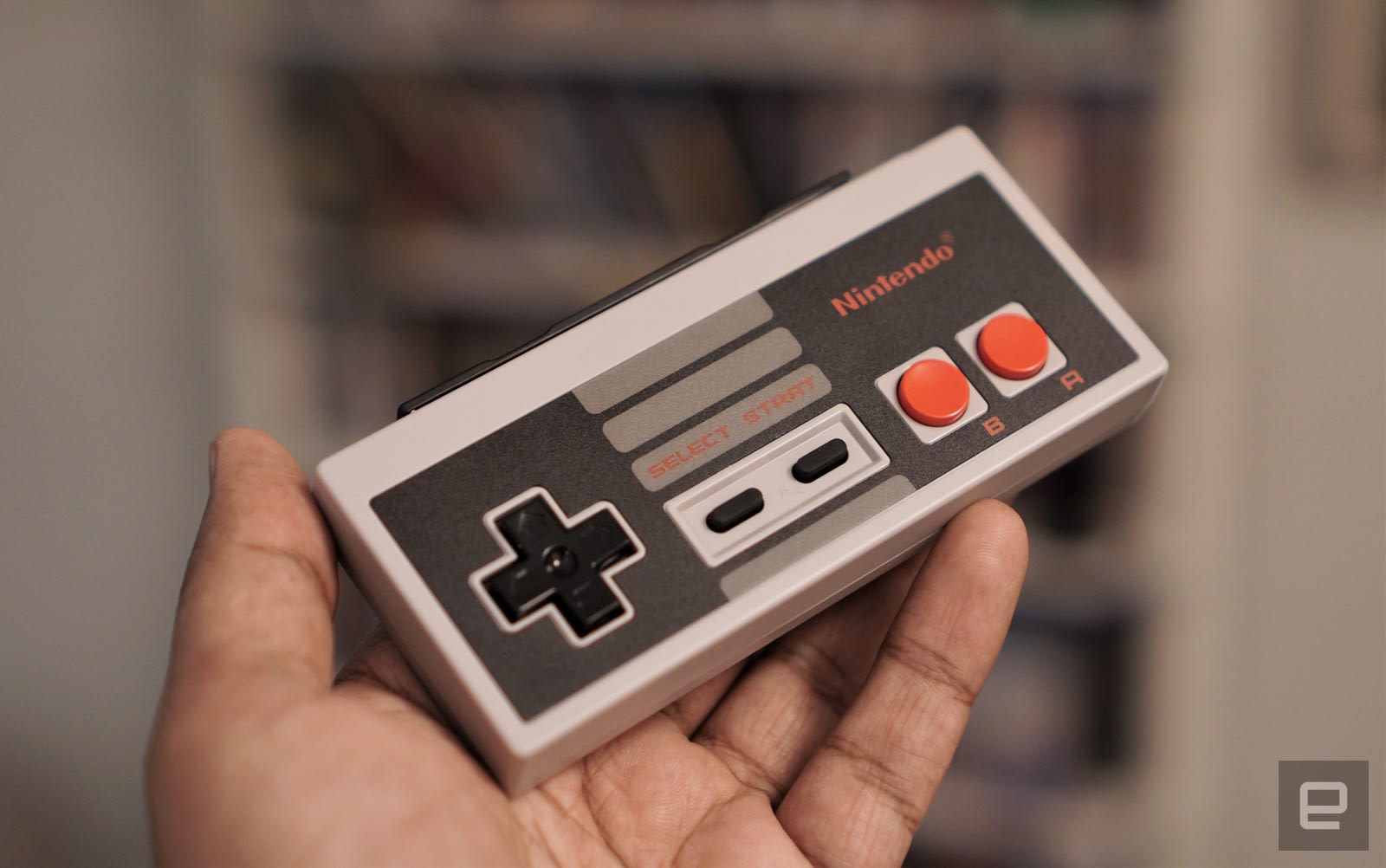Shaima Swileh was finally able to see her son, Abdullah Hassan, in the hospital 10 days ago.
We are living in an interstitial period. In the early 1980s we entered an era of desktop computing that culminated in the dot-com crash — a financial bubble that we bolstered with Y2K consulting fees and hardware expenditures alongside irrational exuberance over Pets.com . That last interstitial era, an era during which computers got smaller, weirder, thinner and more powerful, ushered us, after a long period of boredom, into the mobile era in which we now exist. If you want to help innovate in the next decade, it’s time to admit that phones, like desktop PCs before them, are a dead-end.
We create and then brush up against the edges of our creation every decade. The speed at which we improve — but not innovate — is increasing, and so the difference between a 2007 iPhone and a modern Pixel 3 is incredible. But what can the Pixel do that the original iPhone or Android phones can’t? Not much.
We are limited by the use cases afforded by our current technology. In 1903, a bike was a bike and could not fly. Until the Wright Brothers and others turned forward mechanical motion into lift were we able to lift off. In 2019 a phone is a phone and cannot truly interact with us as long as it remains a separate part of our bodies. Until someone looks beyond these limitations will we be able to take flight.
While I won’t posit on the future of mobile tech, I will note that until we put our phones away and look at the world anew we will do nothing of note. We can take better photos and FaceTime each other, but until we see the limitations of these technologies we will be unable to see a world outside of them.
We’re heading into a new year (and a new CES) and we can expect more of the same. It is safe and comfortable to remain in the screen-hand-eye nexus, creating VR devices that are essentially phones slapped to our faces and big computers that now masquerade as TVs. What, however, is the next step? Where do these devices go? How do they change? How do user interfaces compress and morph? Until we actively think about this we will remain stuck.
Perhaps you are. You’d better hurry. If this period ends as swiftly and decisively as the other ones before it, the opportunity available will be limited at best. Why hasn’t VR taken off? Because it is still on the fringes, being explored by people stuck in mobile thinking. Why is machine learning and AI so slow? Because the use cases are aimed at chatbots and better customer interaction. Until we start looking beyond the black mirror (see what I did?) of our phones, innovation will fail.
Every app launched, every pictured scrolled, every tap, every hunched-over moment davening to some dumb Facebook improvement is a brick in the bulwark against an unexpected and better future. So put your phone down this year and build something. Soon it might be too late.
 Following its massively popular release earlier this year, Capcom’s Monster Hunter: World closes out 2018 with another crossover event. While these limited-time events are usually announced far in advance, the latest arrived as a quest that was seemingly snuck into the game this week. A fitting debut, as this time around Monster Hunter players are getting to dress up like … Continue reading
Following its massively popular release earlier this year, Capcom’s Monster Hunter: World closes out 2018 with another crossover event. While these limited-time events are usually announced far in advance, the latest arrived as a quest that was seemingly snuck into the game this week. A fitting debut, as this time around Monster Hunter players are getting to dress up like … Continue reading

Physical storage always goes on sale for New Year’s, but modern life requires more than plastic totes. Adequate digital storage is also necessary, and luckily, Amazon has a bunch of PNY flash drives and SDXC cards on sale today. If your goal for 2019 has anything to do with organization or productivity, it would…

 Earlier this year Samsung launched the Galaxy Home. For those unfamiliar, the Galaxy Home is a smart speaker in the same lines as the Google Home, Amazon Echo, and Apple HomePod, where it comes with Bixby integrated into the speakers that will allow users to make voice requests, control smart home appliances, and so on.
Earlier this year Samsung launched the Galaxy Home. For those unfamiliar, the Galaxy Home is a smart speaker in the same lines as the Google Home, Amazon Echo, and Apple HomePod, where it comes with Bixby integrated into the speakers that will allow users to make voice requests, control smart home appliances, and so on.
Now according to a report from SamMobile, they have heard that Samsung could be working on a new Galaxy Home speaker, and surprise surprise, the new rumored model is said to be a “mini” version of the Galaxy Home. The trend of creating “mini” versions of speakers aren’t new and we have seen this adopted by the likes of Google and Amazon.
A smaller version will probably appeal to those who do not need to have a full-fledged speaker, and would prefer a smaller version to act as a hub to control their devices with. It also means that it could potentially be cheaper which means that customers could be encouraged to buy multiple units to place around their home.
In fact Amazon, Google, and Samsung might not be alone in wanting to create “mini” models of their smart speakers. There have been some reports in the past where it is said that Apple could also be considering a mini (and more affordable) version of its HomePod.
Another Samsung Galaxy Home Speaker Could Be In The Works , original content from Ubergizmo. Read our Copyrights and terms of use.
There are very few scenes in cinema history that are as cool and unique as the opening sequence from Raiders of the Lost Ark. This, in a movie that is full of iconic scenes. In the 80s, kids everywhere were pretending that they were being chased by a boulder for years. Now, this amazing scene has been recreated in LEGO.
It was built by Caleb Watson and it is full of impressive detail. It has everything that the scene on screen had: The jungle outside, the plane, the sliding stone door, the swing over the pit, skeletons, the golden idol room and more. It’s everything that a LEGO/Indy fan could want in a LEGO set. Be sure to check out Beyond the Brick’s video tour of this impressive diorama:
This scene has six different motors that animate minifigs and booby traps, as well as cycle the rolling boulder back into position. As far as I’m concerned it’s a LEGO masterpiece. I would love to see what this guy could do with Temple of Doom and am looking forward to monkey brains, mine carts and of course, a LEGO Mola Ram pulling a heart out of a chest.
[via Laughing Squid via Geekologie]

Welcome to your last weekend of 2018. Netflix’s first interactive experience for adults has arrived, and the Essential Phone is exiting stage left. Plus, we have a few highlights from earlier this week like Buga…
 Earlier this year Samsung launched the Galaxy Home. For those unfamiliar, the Galaxy Home is a smart speaker in the same lines as the Google Home, Amazon Echo, and Apple HomePod, where it comes with Bixby integrated into the speakers that will allow users to make voice requests, control smart home appliances, and so on.
Earlier this year Samsung launched the Galaxy Home. For those unfamiliar, the Galaxy Home is a smart speaker in the same lines as the Google Home, Amazon Echo, and Apple HomePod, where it comes with Bixby integrated into the speakers that will allow users to make voice requests, control smart home appliances, and so on.
Now according to a report from SamMobile, they have heard that Samsung could be working on a new Galaxy Home speaker, and surprise surprise, the new rumored model is said to be a “mini” version of the Galaxy Home. The trend of creating “mini” versions of speakers aren’t new and we have seen this adopted by the likes of Google and Amazon.
A smaller version will probably appeal to those who do not need to have a full-fledged speaker, and would prefer a smaller version to act as a hub to control their devices with. It also means that it could potentially be cheaper which means that customers could be encouraged to buy multiple units to place around their home.
In fact Amazon, Google, and Samsung might not be alone in wanting to create “mini” models of their smart speakers. There have been some reports in the past where it is said that Apple could also be considering a mini (and more affordable) version of its HomePod.
Another Samsung Galaxy Home Speaker Could Be In The Works , original content from Ubergizmo. Read our Copyrights and terms of use.
An investigation by KSDK showed that the girl’s Type I diabetes was diagnosed twice and that her mother was informed.

